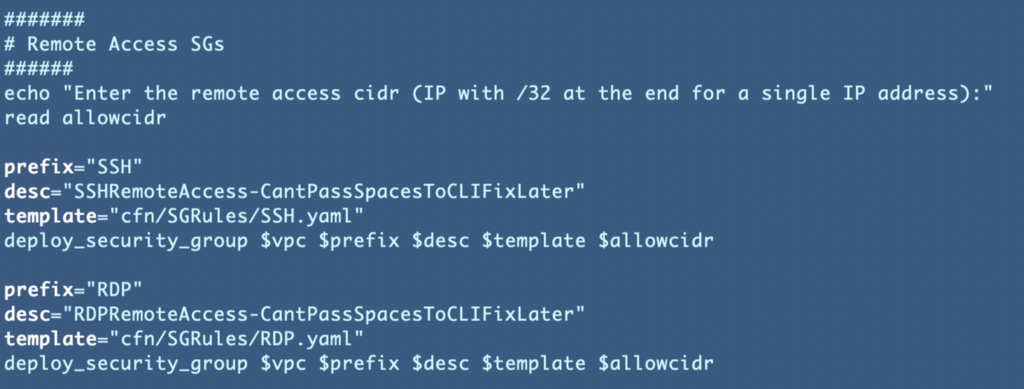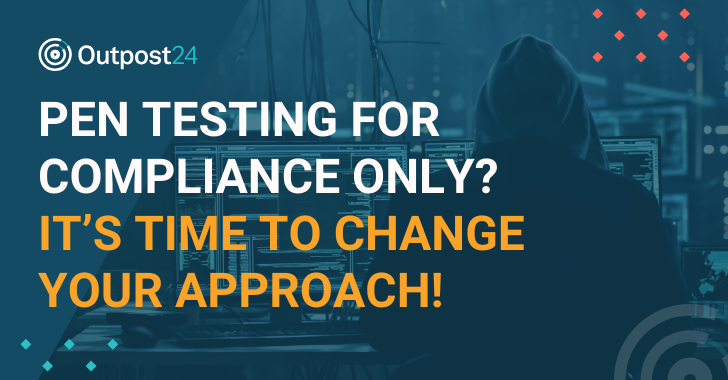ACM.114 Create a security group with a specific user’s IP address
This is a continuation of my series on Automating Cybersecurity Metrics.
In the last post I explained how failure to report errors causes systems and software to break.
Why You Should Not Swallow Errors
Now we’re going to move on to deploying a user-specific VM on AWS.
We’ve deployed an EC2 instance
Automated Deployment of an EC2 Instance with the Latest AWS Linux AMI
With a security group that limits access to SSH from a specific IP address:
Automated Creation of Security Groups on AWS
What if you have a number of remote users that are logging in from different IP addresses?
VPN: A typical way to resolve that problem would be a VPN as that is the purpose of a VPN. Users must authenticate before connecting to the networking. The IPs allowed to authenticate can come from anywhere. Once you connect then the reported IP address for that user is the VPN and that VPN has access to internal networks and resources.
User-Specific Security Groups: What if you could restrict access to each user based on their own IP address? Then allow that user to connect to a specific host that acts kind of like a bastion host for that user on the network. Then, in your logs, you wouldn’t see the general VPN address for traffic initiated by that user, you would see the IP address of a specific host assigned to a specific user (presuming you track if and when hosts go up and down or IPs change.)
Let’s see how we can make that work.
Deploy a User Specific Security Group
We created a CloudFormation template to deploy a security group that allows SSH access for as single IP CIDR or a single IP (a CIDR consisting of the IP address with /32 at the end).
Automated Creation of Security Groups on AWS
Here’s the code in the deploy script:
Let’s change this to create a security group for every member of a specified group. Create a function to retrieve a list of users in a group and create a security group for each user.
Call the function from the deploy script, replacing the existing code above:
Now we have one problem. In order to get the users in a group the network admins (Network profile) need permissions to read group users. We’ll add that to the appropriate IAM Policy.
Deploy the IAM changes.
To make sure this actually works for multiple users in a group, let’s add one more developer:
Deploy the new developer user.
Update the group script we created to add the new user to the group.
Deploy that script and verify the user is in the group. Make sure you completely refresh the groups page even if you click on it from the link on the users page.
Next run network deploy.sh script to see if the new security groups deploy correctly.
By the way, I actually created a small test script to test just this function rather than run all the network stacks over and over again while I worked through some bugs.
Check to make sure the four new groups got created:
Also check that the security groups have the correct rules with the IP address for each user in the appropriate group rules.
Follow for updates.
Teri Radichel
If you liked this story please clap and follow:
******************************************************************
Medium: Teri Radichel or Email List: Teri Radichel
Twitter: @teriradichel or @2ndSightLab
Requests services via LinkedIn: Teri Radichel or IANS Research
******************************************************************
© 2nd Sight Lab 2022
All the posts in this series:
Automating Cybersecurity Metrics (ACM)GitHub – tradichel/SecurityMetricsAutomation
____________________________________________
Author:
Cybersecurity for Executives in the Age of Cloud on Amazon
Need Cloud Security Training? 2nd Sight Lab Cloud Security Training
Is your cloud secure? Hire 2nd Sight Lab for a penetration test or security assessment.
Have a Cybersecurity or Cloud Security Question? Ask Teri Radichel by scheduling a call with IANS Research.
Cybersecurity & Cloud Security Resources by Teri Radichel: Cybersecurity and Cloud security classes, articles, white papers, presentations, and podcasts
User-Specific Security Group for Remote Access was originally published in Cloud Security on Medium, where people are continuing the conversation by highlighting and responding to this story.






